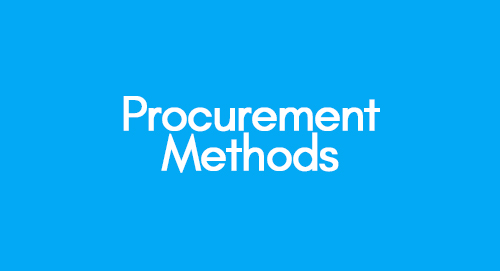
Building Conservation and Adaptation
December 18, 2020
Construction Contracts in Scotland
December 18, 2020Design Build Finance Operate (DBFO) is a way of getting things done where one company takes care of everything from planning and building to paying for and running a project, like a road or a building. It's like hiring a one-stop shop to handle all the steps from start to finish.
Introduction
Procurement methods play a key role in the success and performance of projects, particularly projects of construction and civil engineering (Ruthankoon and Ogunlana 2003, p. 335). The project teams’ development and behaviors are resultant functions of the specific procurement method adopted by companies for the completion of particular projects. Procurement methods have been experiencing various changes throughout the last many years. According to Ruthankoon and Ogulana (2003, p. 333), traditional systems of procurements and other procurement methods have transformed their frameworks and mechanisms of building procurements.
Explore How to Analyze Procurement Methods in Project Management
As a consultant project manager for Oldcross Borough Council, Department of Community Service, the following report is constructed to examine various procurement methods, comparing it with Design-Build-Finance-and-Operate (DBFO) for procuring a major public sector project. Furthermore, a discussion will take place on benefits that can be expected by the client, contractor, and supply chain when entering into a civil engineering project. The report will also look to examine cost risk and its effects on the choice of method of procurement.
Assignment one concerns procurement methods.
Assignment One: Procurement Methods
Procurement methods are the different ways companies or governments buy goods and services they need. It's like how you decide where to buy groceries: you might go to a big store for most things, but sometimes you might choose a local market for fresh produce. Similarly, in business, procurement methods can involve things like open bidding where many sellers compete, or direct negotiations with a specific supplier. The goal is to get the best value for money while making sure you get what you need on time and at the right quality.
Section 1:
The basis of "Design Build Finance and Operate" for procuring a major public sector project; advantages and disadvantages in comparison with other procurement methods for clients, consultants, and contractors
To begin the process of getting a project built relies on the mechanism of procurement. Generally, procurement systems are described as an organizational system that assigns responsibilities and authority to people and organizations and defines various elements in the construction project (Love et al. 1998, p.222). Often procurement is defined as the activities that are taken by a client or an employer who is looking to bring about the construction or refurbishment of a construction project (Wardani, 2004; Bygballe et al., 2010; JCT, 2015a; NBS, 2015,). On a majority of projects, it is common for clients to begin the phase of procurement by first developing a project strategy. The strategy involves calculating the benefits, risks, contract type, construction strategy, information transfer mechanism, and budget constraints of the concerned projects in order to decide the most applicable procurement method. According to various literature (Smith and Charles, 1995; Wardani, 2004; Mishra, 2006; Bygballe et al., 2010; JCT, 2015a; NBS, 2015,) four main procurement methods/systems are identified which are as follows;
- Traditional/Conventional- It is the traditional system used in the construction industry for more than 150 years. Most popular method amongst smaller and middle-sized construction projects in which the constructor works according to a detailed plan provided by the investor (Bygballe et al,2010).
- Design and Build- Popular amongst middle-sized and larger projects. It obligates the contractor to undertake a large part of the project works including preparing detailed project designs and construction methods, while the investor provides just the outline of the project (Mishra, 2006).
- Management- The method is more often used for technologically complex projects where rapid completion is critical. Under this type, the contractor works as a consultant and they manage construction works that are undertaken by subcontractors but are not directly responsible for the subcontractors.
- Integrated- at times known as collaborative procurement; places an emphasis on participants of projects on the mutual objective of delivering the project on time, to the budget, and quality. It involves working as a team, disregarding limitations of organization or location in order to meet the needs of a client (JCT, 2015b.
Generally, factors such as those below are normally evaluated before confirming the type of procurement method;
- External factors- This includes economic, commercial, political, societal, legal, and technological factors that influence the client and their business, and the project team during the project’s lifecycle (Rowlinson 1999).
- Client resources- This includes the client’s own knowledge and experience of the organization with procuring building conservation projects and the environment in which the client operates (Morledge et al. 2006).
- Project characteristics- This includes factors of the size, complexity, location, and uniqueness of the project as it influences the time, risk, and cost of the project (Morledge et al. 2006).
- Ability to make changes- This includes considering to what extent to which the design of the project can be completed and the plausibility of any changes that may occur in terms of technology and scope (Rowlinson 1999).
- Cost issues- This includes assessing the need for price certainty by the client since there is a time delay from initial estimates to when tenders are received (Rowlinson 1999).
- Timing and risk assumptions- This includes assessing time cost and other risk trade-offs (Davis et al. 2006).
Deciding the procurement method is affected by factors such as the client’s policies regarding the risk assumptions, resources, desired contractual agreements, and organizational structure. These procurement methods are tailored especially for large-scale public sector projects where finance is considered a pivotal factor. For instance, the Design- Build- Finance- and Operate (DBFO) is one system that is based upon this integration, and it is used for the private finance initiative (PFI), which is derived through the design and build procurement system. Under this system, private organizations assume the responsibility of designing, financing, and operations of the project.
Based on these factors, it is obvious that financing of the project plays a critical role throughout the project process, particularly procurement strategies. Therefore, project financing can be considered for all the four popular procurement systems presented earlier. Project financing is the long-term financing of infrastructure and industrial projects based on the anticipated cash flows of the project instead of the balance sheets of investors or sponsors of the project (Hoffman 2007, p117). Project financing comes in various forms, particularly—Own-Operate-Transfer (BOOT); this form of project financing in which a private entity receives a concession from the private or public sector to finance, design, construct, and operate a facility, but the private company at the time of concession owns the and operates the facility to recover costs of investment and maintenance while trying to receive a higher margin on the project (Smith and Charles 1995, p. 189).
Design- Build- Finance- and Operate (DBFO) is a delivery method that shares characteristics with BOOT, the only exception being that there is no actual ownership transfer. The organization under this procurement methodology accepts to undertake large-scale projects such as schools and hospitals, before leasing back to the public sector/client. Through the adaptation of this methodology, the uncertainties related to the construction as well as operations are transferred to the private organization, and the financial responsibilities are spread over an agreed amount of time, which reduces any form of immediate risks. However this transformation of risk, in many cases, is reflected in the amount the client has to pay. According to Pekka (2002) under the DBFO model, since the contractor assumes the risk of financing until the end of the contract period, it gives much leverage of risk transformation which is a major concern in the public sector, and hence is considered as the primary advantage of this method. Other advantages of this system according to Pekka (2002) on projects include the following;
- Encouraging the increase in private investment
- Increasing and attracting new and foreign capital into the country in which the project is taking place
- Transferring the construction technology and knowledge
- Completion of the project within a given time frame and planned budget often not present in other systems of finance
- Providing additional financial resources for other projects that are considered of more priority
- There is a release of burden on public budgets set up by the government for infrastructure development.
With the DBFO the government also has the advantage of remaining the owner of the facility but is also able to avoid getting into debt. Cash flows also are used as the mode of repayment on investment and reward for its shareholders.
Section 2:
The range of benefits that the client, contractor, and supply chain can expect to see when entering into a partnering relationship in the design and construction of civil engineering projects; disadvantages, and management systems to minimize them
Partnering relationships have been becoming a significant development in the construction industry that is said to have brought about improvement in project performance (Wood and Ellis 2005, p. 317). According to the Construction Industry Institute (1991), partnering is a long-term commitment between two or more organizations for the purposes of achieving specific business objectives by maximizing the effectiveness of each participant's resources. According to Bygballe et al. (2010), partnerships are seen as a strategic arrangement whereby a contractor is involved in a series of projects or a short-term single project arrangement with the main goal of lowering costs and improving efficiency.
Partnerships can be operated independently of strategic alliances in which collaborators cooperate and share their resources in order to achieve common aims and goals. Several studies have indicated that there are a great deal of positive aspects associated with partnership arrangements. Several large business groups such as Esso, Sainsbury, and British Airports Authority have reported savings of 40 percent on costs and 70 percent on time from partnership relations (Gordon 1994). According to Gordon (1994), clients and contractors have a more empowered relationship from partnering and working together more effectively.
Lui and Fellows (2001) have concluded in their studies that partnering can enhance project performances under the conditions that (1) there is work assurance- that partners will work together for the cooperative whole and (2) there is benefit insurance- which is gains distribution is equitable. According to Chan et al. (2004) and Black et al. (2000) once project partnering is appropriately implemented there are various advantages which include; reduction in cost and time of project implementation, establishment of good and less adversarial relationships, risk sharing, operational savings, increased implementation speed, construction projects cost savings, quality control, improvement in design, increased understanding of parties and customer satisfaction, enhancing of economic growth in a country, facilitation of solutions that are creative and innovative, enhancing of facility maintenance, improved return on resources, increased revenue generation contributing to national development, improvement of administration, greater financing options, and reduced risk exposure.
Such partnerships can also be implied through the ‘Design Build Finance and Operate’ system of procurement in the form of a public-private partnership (PPP), which is a government service venture that is funded and operated through a partnership of government and one or more private sector companies (Fortune and Setiawan 2005). This strategic relationship involves a contract between the public sector and private parties in which the private party is the provider of a public service or project and assumes the risk related to the project, particularly financial, technical, and operational. Advantages of such collaboration include imposing budgetary certainty by setting present and future costs of infrastructure projects over a period of time.
Further, the use of this partnership allows for a way of developing local and private sector capabilities through joint ventures with large-sized international firms and also grows opportunities for sub-contracting to local firms in areas of civil works, electrical works, facility management, security, cleaning services, and maintenance services, hence benefitting the client, contractor, and supply chain (Fortune and Setiawan 2005). The public-private partnership and procurement systems such as DBFO also have the advantage of supplementing limited public sector capacities to meet the growing demand for infrastructure development. Lastly, there is also the advantage of long-term value-for-money using apposite risk transfer to the private sector over the life of the project which ranges from design and construction to operations and maintenance (Fortune and Setiawan 2005).
However, this form of partnership also comes with disadvantages that can be mitigated with certain management approaches. Firstly, the ongoing costs, development, and bidding costs in partnered projects are more likely to be expensive than traditional government procurement strategies (Fortune and Setiawan 2005). Therefore, the government or public sector organization should determine if the greater costs are justifiable. Other disadvantages include the cost attached to debt; private sector organizations can make it easier to get finance (Fortune and Setiawan 2005).
Moreover, finance is only made available where the operating cash flows of the project company are expected to provide a return on investment. There is also no limit to risk-bearing, which is why private firms and their lenders are very cautious when it comes to accepting major risks that are considered to be beyond their control (i.e. exchange rates risks, risks of existing assets) (Fortune and Setiawan 2005). If the private sector were to bear these risks the price of their services would reflect these various risks. There is also the disadvantage of the private sector only doing what they are paid to do and not more than that. Thus, it becomes necessary clearly state incentives and performance requirements within the contract. Thus, it is suggested that management focus on performance requirements that are output-based and considerably easy to monitor. Also, management will need to focus on legal and regulatory frameworks to achieve sustainable solutions.
Section 3:
Consideration of how cost risk affects the choice of method of procurement
Construction cost overrun is considerably a major risk that is likely to be witnessed in infrastructure projects. Being able to know the plausibility of cost overruns occurrence and its impact is imperative in project planning and implementation. This vital information can also be used as an input factor to determine risk in pricing exercises, in order to raise equity and debt finance for construction projects. Various studies on the accuracy of cost estimates for construction procurement have shown a probability distribution of cost overruns revealing systematic risk and a continuous and positive skew (Flyvbjerg et al. 2002; Cantarelli, 2012; and Makovsek, 2012).
From the literature reviewed, the conclusion drawn can be that the construction risk in public sector projects is considered to be expressively high. Construction risk arises from two major factors; exogenous risks which include ground conditions, weather, engineering challenges, unexpected archaeological sites, and others. The second risk deals with which parties’ exposure to uncertain costs and what can be done about it; known as endogenous construction risk. The second form of risk is considered an agency problem; if the higher risk in construction costs is not tolerated by the party in charge of the building there is a resultant rise of ‘moral hazard’ (Blanc-Brude and Makovsek 2013).
According to Luu et al. (2003), the selection of an appropriate procurement method can reduce the cost of construction projects by an average of 5 percent while also enhancing the probability of project success. It is found that reduction in cost risk in the traditional procurement method results in maximum cost certainty for a project that is often defined fully in the project. Also, it is also considered to be inflexible in design changes which can result in excessive cost implications.
In design-build project procurement, the design-build contractor takes on the increased risk and will price the risk based on the level of scope definition. The impact of risks the design-build contractor is expected to carry needs to be covered by the public sector’s cost estimate (Flyvbjerg et al. 2002). Thus, the decision to use the design-build procurement method should be made during the early phase of programming; at a time in which baseline budgets are being developed. Other procurement methods may reduce the time of construction, for cases where costs as well as time of project completion is critical, and where incentive/disincentive approaches are required (Flyvbjerg et al. 2002).
These are types of procurement methods and approaches that enable the shift of the risk of cost to the contractor. When choosing a particular procurement method, there are various factors related to cost risk that need to be taken into consideration. The tendering system which is mainly found in the traditional procurement method contributes to the uncertainty of the contracting system. Also, the traditional method commonly needs to have the design completed before any work is commenced, making this difficult to achieve. There is also the risk of variations that may occur during the construction stage, leading further to cost increases (Flyvbjerg et al. 2002). There is also incomplete documentation during the tender stage making it difficult for the contractor to give an accurate price estimation.
In procurement methods of design and construction, there is a greater certainty of cost, to the extent that if needed the responsibility for investigating site and ground conditions can be made entirely through the contractor (Flyvbjerg et al. 2002). However, on the other hand, any changes that may come from the employer’s requirements can affect the contract sum and at times are considered to be costly. On the other hand, in the procurement method of management, there are standard concrete costs such as a proposed management fee and the management contractor undertakes the work on the basis of contract, and cost plans that are based on project specifications. The client is then seen to accept the majority of the risks that are associated with the project as there is no certainty about the costs and the program. Under this umbrella is also the design and management strategy which is similar to management contraction but under this contract, the contractor is paid a fee and assumes the responsibility for work contractors and the design teams (Flyvbjerg et al. 2002).
Conclusion
In conclusion, the DBFO procurement method offers a comprehensive approach to project delivery, integrating design, construction, financing, and operation. This strategy streamlines project management and fosters accountability among stakeholders. Overall, DBFO presents a viable solution for complex infrastructure projects, ensuring efficient execution and long-term sustainability.
Below are the references cited in the study.
References
Anderson, S. D., Molenaar, K. R., and Cliff, S. (2007) Guidance for Cost Estimation and Management for Highway Projects During Planning, Programming, and Preconstruction. Washington, D.C.: Transportation Research Board.
Black, C., Akintoye, A., and Fitzgerald, E. (2000). ‘An analysis of success factors and benefits of partnering in construction.’ International Journal of Project Management, 18, p. 423-434.
Blanc-Brude, F., and Makovsek, D. (2013) ‘Construction risk in infrastructure project finance.’ EDHEC Business School.
Bygballe, L. E., Jahre, M., and Sward, A. (2010) ‘Partnering relationship in construction: A literature review.’ Journal of Purchasing & Supply Management, 16, p. 239-253.
Cantarelli, C. C., (2012) ‘Cost overruns in large-scale transport infrastructure projects- A theoretical and empirical exploration for the Netherlands and worldwide. Transport Policy, 22, p. 88-95.
Chan, A. P. C., Chan, D. W. M., Chiang, Y. H., Tang, B. S., Chan, E. H. W., and Ho, K. S. K. (2004) ‘Exploring critical success factors for partnering in construction projects.’ Journal of Construction Engineering and Management, 130, pp. 188-196.
Construction Industry Institute (CII). (1991) ‘In search of partnering excellence. Special Publication No. 17-1. Partnering Task Force of CII, Austin, Texas, USA.
Davis, P., Love, P., and Baccarini, D. (2006) ‘Report- building procurement methods.’ CRC Construction Innovation. Research Project No.: 2006-034-C-02.
Flyvbjerg, B., Holm, M. S., and Buhl, S. (2002) ‘Underestimating costs in public works projects error or lie?’ Journal of the American Planning Association, 68, p. 279-295.
Fortune, C., and Setiawan, S. (2005) ‘Partnering practice and the delivery of construction projects for housing associations in the UK.’ Engineering, Construction, and Architectural Management, 12, p. 181-193.
Gordon, C. M. (1994) ‘Choosing appropriate construction contracting method.’ ASCE Journal of Construction, Engineering, and Management, 120, p. 196-210.
Hoffman, S. (2007) The Law & Business of International Project Finance (3rd ed.). Cambridge University Press.
Love, P. E. D., Skitmore, R. M., and Earl, G. (1998) ‘Concurrent engineering: A strategy for procuring construction projects.’ International Journal of Project Management and Economics, 16, p. 221-233.
Luu, D. T., Thomas, S., and Chen, S. E. (2003) ‘ Parameters governing the selection of procurement system- An empirical study.’ Construction Management and Economics, 12, p. 221-233.
NBS. (2015) ‘Procurement methods.’ [online] Available from: http://www.thenbs.com/topics/ContractsLaw/articles/whichProcurementMethod.asp. [Accessed: 18 October 2015].
Makovsek, D. (2012) ‘Public-private partnerships, traditional financed projects, and their price.’ Journal of Transport Economics and Policy (JTEP). London Scholl of Economics and the University of Bath.
Mishra, R. C. (2006) Modern Project Management. NY, NY: New Age International, Inc.
Mortledge, R., Smith A., Kashiwagi, D. T. (2006) Building Procurement. Oxford, UK: Blacwell.
Pekka, P. (2002) Innovative Project Delivery Methods for Infrastructure. Finnish Road Enterprise.
Rowlinson, S. (1999) ‘Selection criteria.’ In. Rowlinson, S., and McDermott, P., Procurement Systems: A Guide to Best Practice in Construction. London, UK: E & F Spon, p. 276-299.
Ruthankoon, R. and Ogunlana, S. O. (2003) ‘Testing Herzberg’s two-factor theory in the Thai construction industry’. Engineering, Construction and Architectural Management, 10 (5), p. 333-341.
Smith, W., and Charles, A. (1995) Privatized infrastructure: The Build Operate Transfer Approach. Essex, UK: Thomas Telford.
The Joint Contracts Tribunal (JCT). (2015a) ‘Procurement.’ [online] Available from: http://www.jctltd.co.uk/procurement.aspx [Accessed: 18 October 2015].
The Joint Contracts Tribunal (JCT). (2015b) ‘integrated.’ [online] Available from: http://www.jctltd.co.uk/integrated.aspx [Accessed: 18 October 2015].
Wardani, M. A.. E. (2004) ‘Comparing procurement methods for design-build projects.’ Computer Integrated Construction Research Program. [online] Available from: http://www.engr.psu.edu/ae/cic/publications/techreports/tr_046_elwardani_2004_db_proc_methods.pdf. [Accessed: 20 October 2015].
Get 3+ Free Dissertation Topics within 24 hours?













